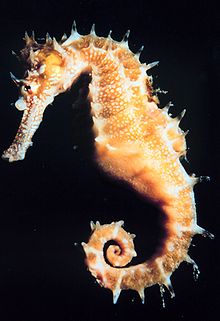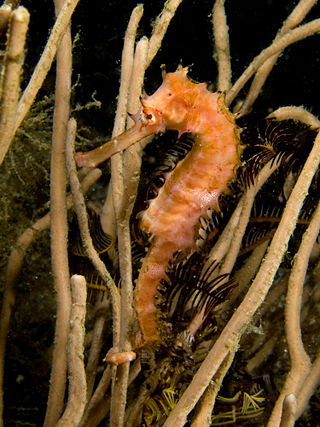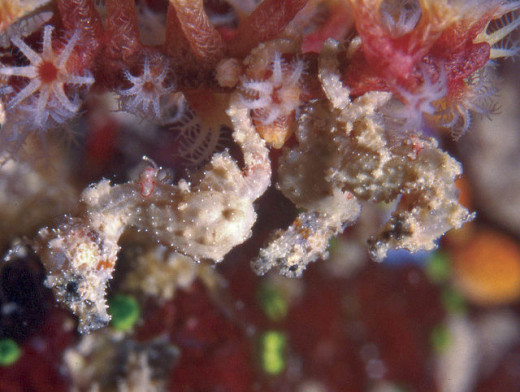Seahorses - fascinating fishy facts!
Seahorses are marine fish that belong to the genus Hippocampus, which literally translates as horse-monster, or horse-caterpillar. They are fascinating creatures, both in terms of their appearance and behaviour, and this article aims to give you some idea of their unique characteristics.

Physical facts
Seahorses are easily recognised by their horse-like head and neck, their upright swimming position, and curly prehensile tail. However they are quite small animals, with dwarf species at only about 2.5 cm (1 inch) long, and the larger species growing up to around 30 cm (12 inches).
They are bony fish, but do not have scales like normal fish. Instead they have a kind of exoskeleton made up of bony rings, that has a tight skin stretched over it.
They do not swim particularly well, using only the rapid movement of their dorsal fin to move around, but luckily they do not need to swim too far as they are very territorial, and tend to stick to their own small territory of about 1 to 2 square meters.
There are many different varieties of seahorse, from the simple Hippocampus pictured above to much more elaborate creatures with long frills, bony protrusions and some that are just plain weird!
Feeding facts
They feed on small crustaceans such as mysid shrimps, or other small prey that floats or crawls by. They have excellent eyesight, with each eye able to work independently of the other, and able to look all around, which is very useful for hunting. They can root out prey from small crevices with their long snouts, which they also use to suck up food. They have no teeth, but digest their food whole.

Fascinating breeding facts
Their breeding habits are one of the most fascinating aspects of seahorses. They are one of the only fish that pair up for life, and after elaborate courtship dances, and fertilisation of eggs, it is the male seahorse that carries the eggs in its pouch for the duration of incubation, and then gives birth to them. This male "pregnancy" is unique amongst all known animal species. Once hatched the baby seahorses are on their own, existing as free-floating plankton, until they are big enough to fend for themselves. They are hatched in large numbers as the survival rate is quite low - only around 0.5%.
Where to find them
There are nearly 50 species of seahorse around the world, living mainly in the shallow seas of tropical or temperate zones. Their preferred habitats include eel-grass beds, coral reefs and mangrove swamps, where they attach themselves to seaweed stems or corals with their tails so they are not washed away by strong currents.
There are even some species of seahorse living off the coast of the UK, in some rare and specialised habitats. These seahorses have been acknowledged as a rarity and protected in recent years. There is an ongoing campaign to protect more of the UK's rare habitats and marine wildlife through Marine Protected Areas (MPAs), for more information see Dorset Wildlife Trust's page.

Have you ever seen a seahorse
Colour change and camouflage
Seahorses have the ability to change colour, giving them the advantage of being able to camouflage themselves in their surroundings in order to protect them against predators, and it is thought that colour change is also used as part of the courtship display. Some species are also adapted to look like seaweed or corals, and blend very well into their surroundings - you would have a job spotting them amongst the seabed plants.
Under threat
Sadly seahorses are under threat of exploitation and even extinction in some parts of the world. They have been over-fished for use in traditional Chinese medicine, collected from the wild for private aquariums, and killed and dried out for use as ornaments. There is of course illegal trade on the internet, but there are some charitable organisations keeping an eye on this, and hopefully leading to prosecution of those breaking the law.
You can support seahorse research and protection of the species through The Seahorse Trust, Save our Seahorses, or one of the local Wildlife Trusts who do such a great job looking out for our wildlife.
Further reading
You can find more information about these fascinating creatures at the seahorse trust and wikipedia.








